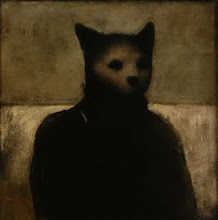 Basically, the way I see it, is that martial artists are reprogramming their patterns of thought to view the world in a circular format rather than a linear one.
Basically, the way I see it, is that martial artists are reprogramming their patterns of thought to view the world in a circular format rather than a linear one.It is a concept that extends beyond technique and merges into the student’s overall perception of reality itself. After all, linear forms are human, and not of nature. The universe works effortlessly, utilizing spin to create and sustain energy. This is true with planets or atoms, and everything else in between. Even space itself bends, causing starlight to curve as it travels from its source to our eyes.
In martial arts such as small-circle jiu-jitsu, aikido and judo, this relationship with the circle is paramount. The techniques won’t work without it. Force eases with its use, and an attacker’s energy can be transferred away from harming the defender.
When this concept is taken outside of the dojo, into daily life, it works the same way. Deflecting negativity allows our own energy to remain stable. We learn about cycles of seasons, growth, emotion, economy, injury and age. In the trees we see the rings of years, which are comparable to our own periods of inner development.
However, while everything exists in circular form, as a species, we juxtapose our own patterns onto nature’s: square houses, right angled roads, rectangular books and screens, etc. This is because we don’t view the world around us as an integrated whole. We see it in limitations and separations.
But when we learn to think in circles, we maximize our energy and potential. In this way, we may expand our understanding of our own lives and remove ourselves from the boxes in which we have placed ourselves.

To embrace circle over line is like learning yin without yang. The believe the study is both line and circle.
ReplyDeleteSome brilliantly aiki arts - Wing Chun, is based on principles of line. Worth looking into.
Softness and circuity is an important aspect in karatedo as well. Even though it is thought of as a hard art, traditional Okinawan karate contained both go (hardness) and ju (softness).
ReplyDeleteI personally find both to be quite vital.
Lines and squares are but artificial things, created in the attempt to understand natural forms, or as Fritjof Capra in his "Phisics of Tao" puts it, human concepts are like maps to the charter: ways to understand the world, but not the world itself.
ReplyDeleteI like the blog you're running. If you're interested, I'm running a little blog myself about martial arts and taoist philosophy. I'd be glad if you take a look, the address is http://dgsite.altervista.org/
these are all good comments.... i am going to think about the ying/yang aspect of this a lot more and comment later....
ReplyDelete